Table of Contents
Introduction to Essential Spices
Whether you're new to cooking or a seasoned home chef, having the right spices transforms simple ingredients into memorable meals. This guide covers the top 10 essential spices every kitchen needs, how to use them effectively, and practical tips for building your collection. No culinary expertise required—just follow these simple steps to elevate your cooking.
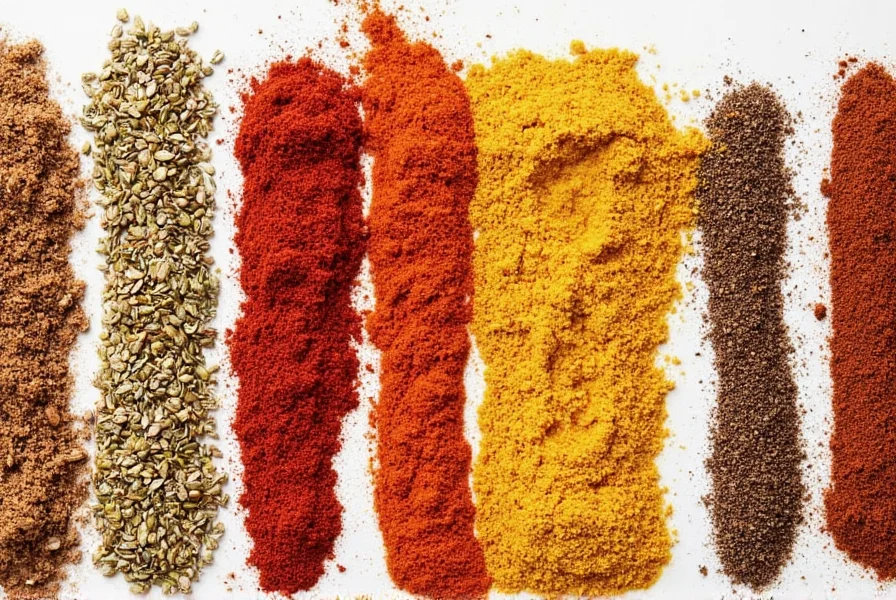
Top 10 Must-Have Spices
These foundational spices cover the widest range of cuisines and dishes. Start with these before expanding your collection:
- Black Pepper – The universal seasoning. Use whole peppercorns for grinding fresh or pre-ground for convenience. Enhances savory dishes from steaks to soups.
- Cumin – Earthy and warm. Essential for Mexican, Indian, and Middle Eastern dishes. Toast whole seeds before grinding for maximum flavor.
- Paprika – Adds vibrant color and mild sweetness. Smoked paprika brings depth to stews and rubs. Keep in a cool, dark place to preserve color.
- Cinnamon – Versatile for both sweet and savory applications. Use Ceylon cinnamon for delicate desserts and Cassia for robust dishes like chili.
- Oregano – A Mediterranean staple. Dried oregano works best in cooked dishes like sauces and roasted vegetables.
- Garlic Powder – Consistent flavor without prep time. Ideal for rubs, marinades, and quick seasoning when fresh garlic isn't available.
- Chili Powder – A blend of chilies, cumin, and other spices. Perfect for tacos, chili, and Southwest-inspired dishes.
- Bay Leaves – Subtle herbal note for soups, stews, and braises. Remove before serving. Store whole for maximum longevity.
- Thyme – Earthy and slightly floral. Great for roasted meats, vegetables, and tomato-based sauces.
- Curry Powder – A pre-mixed blend for Indian-inspired dishes. Look for fresh, fragrant blends without added fillers.
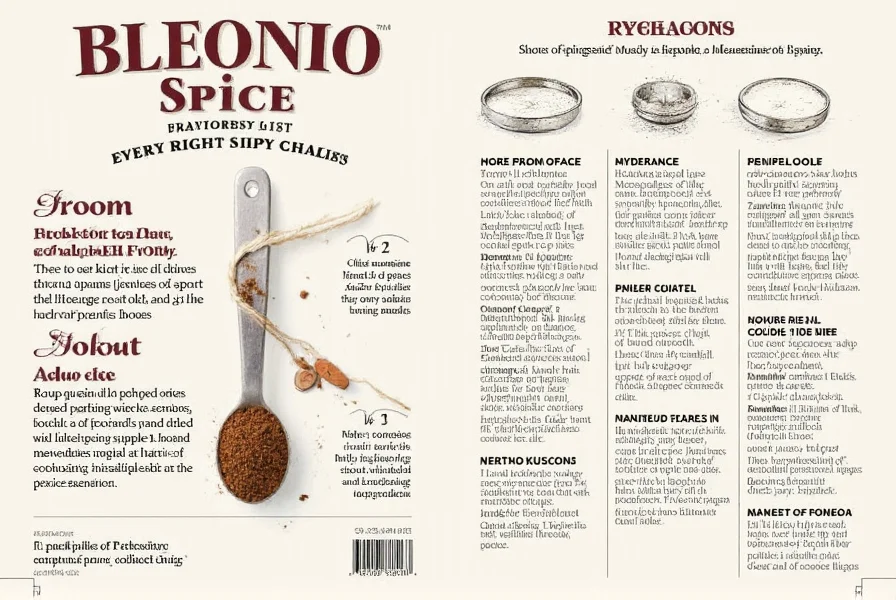
| Spice Pairing | Flavor Profile | Best Used In |
|---|---|---|
| Cumin + Coriander | Earthy and citrusy | Indian curries, chilis, taco seasoning |
| Garlic + Onion Powder | Savory and pungent | Stews, soups, meat rubs |
| Chili Powder + Cumin | Smoky and spicy | Mexican dishes, grilled meats, roasted vegetables |
| Thyme + Rosemary | Herbaceous and woody | Roasted chicken, potatoes, lamb dishes |
| Cinnamon + Nutmeg | Warm and sweet | Pies, oatmeal, mulled cider, baked goods |
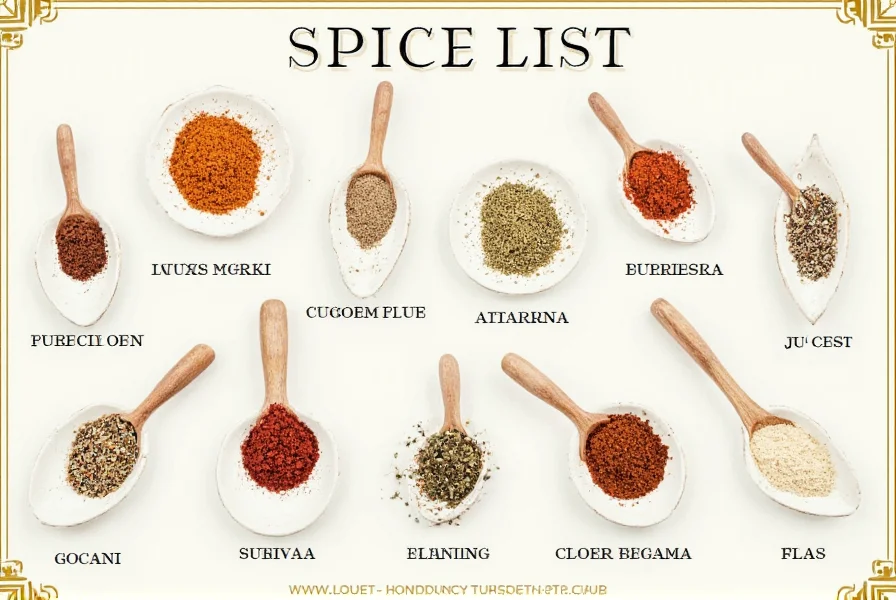
Smart Spice Buying Guide
Follow these tips to choose high-quality spices that last longer and deliver better flavor:
Key Buying Considerations
- Freshness indicators – Check packaging dates. Spices should have strong aroma when opened. Avoid containers with faded colors or clumping.
- Whole vs. ground – Whole spices (cinnamon sticks, cumin seeds) retain flavor 2-3x longer than ground. Invest in a small grinder for maximum impact.
- Origin matters – Saffron from Iran, cardamom from Guatemala, and cinnamon from Sri Lanka typically offer superior quality.
- Storage-friendly packaging – Opt for opaque containers or dark glass to protect from light. Avoid clear plastic containers for long-term storage.
Quality vs. Cost
- Higher-priced spices often indicate better quality and freshness
- Buy small quantities of expensive spices (like saffron) to ensure freshness
- Common spices (black pepper, paprika) can be purchased in bulk from reputable brands
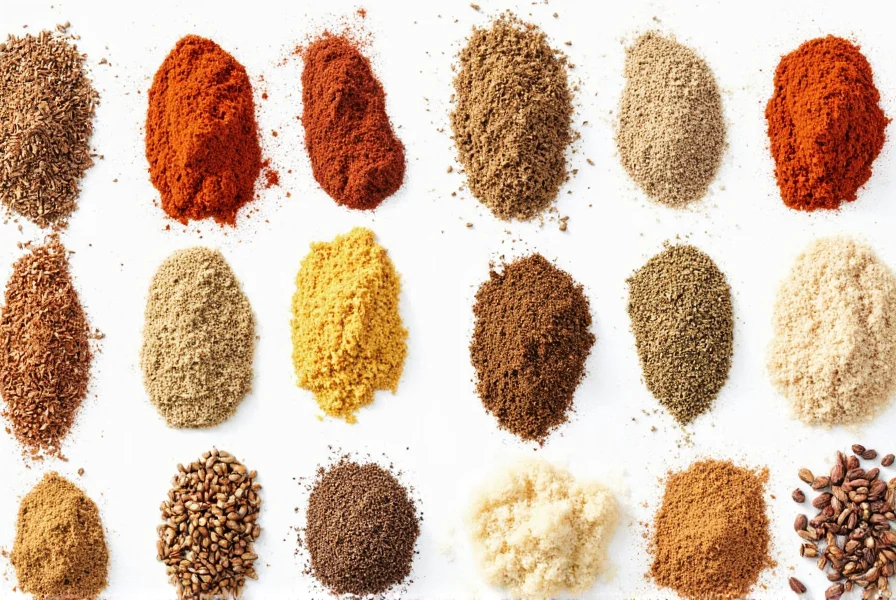
Expert Storage & Usage Tips
Maximize your spice investment with these professional techniques:
- Grind whole spices just before use – Freshly ground cumin or coriander has 3x more flavor than pre-ground versions.
- Store away from heat sources – Keep spices in a cool, dark pantry, not above the stove or oven.
- Use the "pinch test" for seasoning – Start with 1/8 teaspoon per serving, taste, and adjust gradually. You can always add more, but you can't remove excess.
- Label everything with purchase dates – Use masking tape and a marker for clear, removable labels. Replace ground spices every 12 months, whole spices every 2-3 years.
- Organize by frequency of use – Keep daily spices at eye level, seasonal spices in higher shelves. Alphabetical order works well for quick reference.
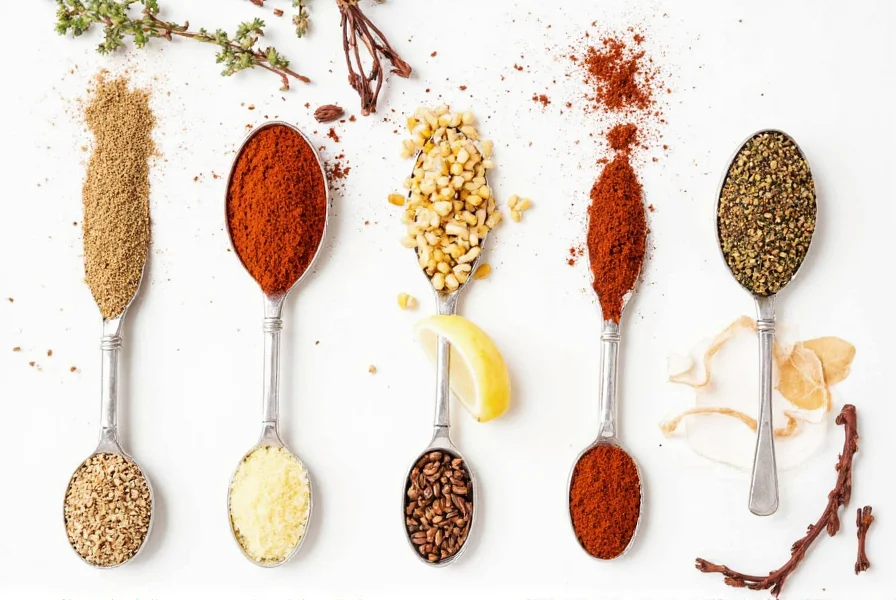
Spice FAQs
What are the absolute essential spices for a beginner's collection?
Start with these 5 core spices: black pepper, cumin, paprika, cinnamon, and garlic powder. These cover the widest range of cuisines and dishes. Black pepper enhances savory dishes, cumin adds earthiness to Mexican and Indian recipes, paprika brings color and mild sweetness, cinnamon works in both sweet and savory applications, and garlic powder provides consistent flavor without prep time. Add oregano and chili powder next for expanded versatility.
How long do spices actually last before losing potency?
Whole spices maintain peak flavor for 2-3 years when stored properly. Ground spices last 1-1.5 years. Red spices like paprika and chili powder fade faster (6-12 months). Test freshness by rubbing a small amount between your fingers—if the aroma is weak or musty, replace it. Proper storage in airtight containers away from heat and light significantly extends shelf life.
Should I buy whole spices or ground spices for my collection?
Prioritize whole spices for longevity and flavor. Whole cumin seeds, peppercorns, and cinnamon sticks retain essential oils much longer than pre-ground versions. Invest in a small spice grinder for fresh grinding. Exceptions include spices that are difficult to grind at home (turmeric) or those that don't benefit from fresh grinding (paprika). For most spices, grinding whole seeds just before use makes a noticeable difference in flavor intensity.
How can I organize my spice collection effectively?
Effective organization depends on your kitchen layout. Popular methods include: grouping by cuisine (Mexican, Indian, etc.), arranging alphabetically, or organizing by frequency of use (daily essentials at eye level). Use uniform containers with clear labels including purchase dates. Consider tiered racks, drawer inserts, or magnetic wall containers. The best system is the one you'll consistently maintain—test different approaches for 2 weeks before committing.
What's the difference between a spice blend and individual spices?
Individual spices are single-ingredient seasonings (like cumin or cinnamon), while spice blends combine multiple spices in specific ratios (like curry powder or taco seasoning). Blends offer convenience but often contain additives or salt. Building your collection with individual spices gives you more control over flavor balance and customization. Many professional cooks prefer making their own blends from individual spices for superior freshness and tailored taste.
Can I substitute one spice for another if I don't have what a recipe calls for?
Yes, but with considerations. Good substitutions include: cumin for coriander (earthier), chili powder for cayenne (milder), allspice for cloves (similar warm notes), and oregano for marjoram (similar flavor profile). Avoid direct 1:1 substitutions with potent spices like cloves or cardamom. When substituting, start with half the recommended amount and adjust to taste. Remember that substitutions change the dish's character—sometimes this creates happy accidents, other times it's better to simplify the recipe with available spices.
How much spice should I use when cooking?
Begin with the "pinch principle"—start with 1/8 to 1/4 teaspoon per serving for most spices. Taste as you cook and adjust gradually. Remember that dried spices are more concentrated than fresh (use 1/3 the amount of dried versus fresh herbs). Acidic ingredients like tomatoes or vinegar can mute spice flavors, requiring slightly more seasoning. Always add spices early in cooking for infused flavors, but reserve delicate spices like fresh basil for finishing. When in doubt, under-season rather than over-season—you can always add more, but you can't remove excess.
What's the best way to build a personalized spice list over time?
Build your spice list progressively based on your cooking habits. Start with 5-7 versatile spices matching your preferred cuisines. As you cook more, note which spices you reach for frequently and which sit unused. Research regional spice blends for cuisines you enjoy (like berbere for Ethiopian or za'atar for Middle Eastern). Keep a "spice journal" noting successful combinations. Every 3-6 months, evaluate your collection: replace stale spices, add 1-2 new ones based on cooking interests, and consider removing rarely used items. The perfect spice list evolves with your culinary journey.
Final Thoughts
A well-curated spice collection is the foundation of exceptional home cooking. By starting with these top 10 essential spices, learning proven pairings, and following smart storage practices, you'll transform simple ingredients into restaurant-quality meals. Remember: quality matters more than quantity. Focus on fresh, high-quality spices rather than filling your cabinet with unused options. Happy cooking!

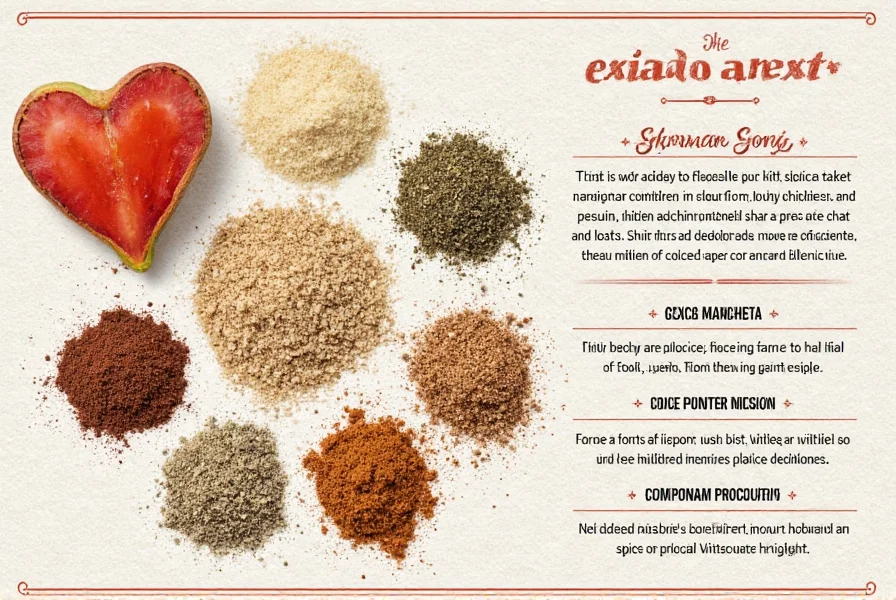









 浙公网安备
33010002000092号
浙公网安备
33010002000092号 浙B2-20120091-4
浙B2-20120091-4